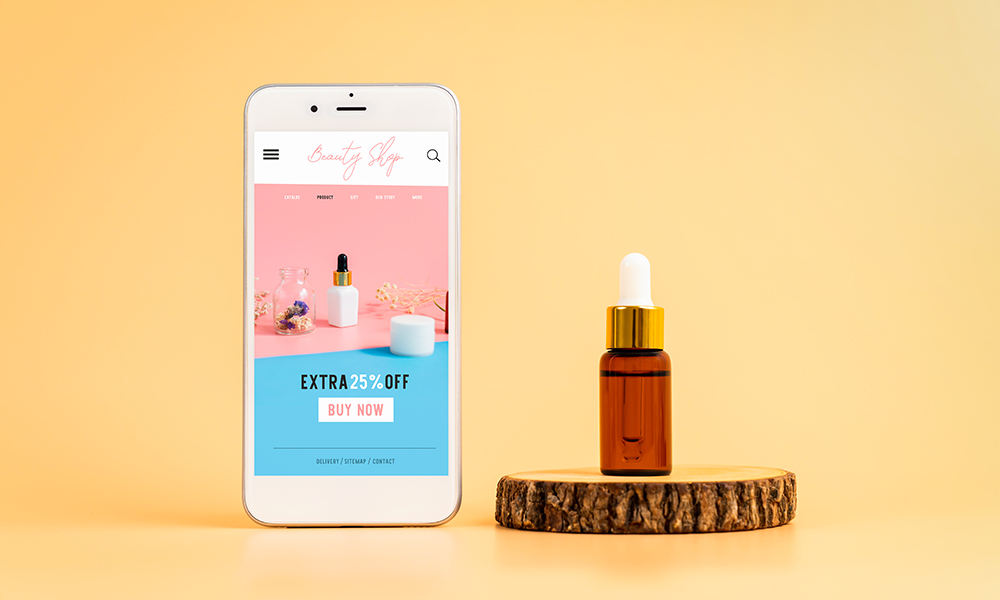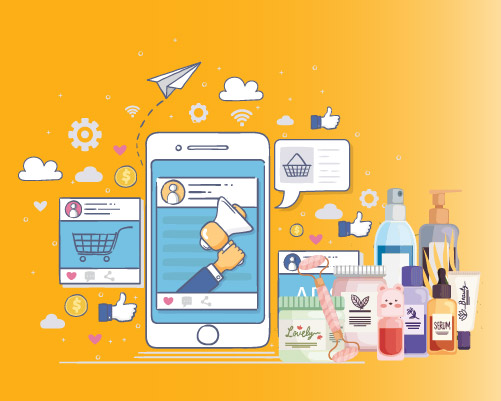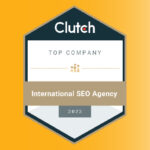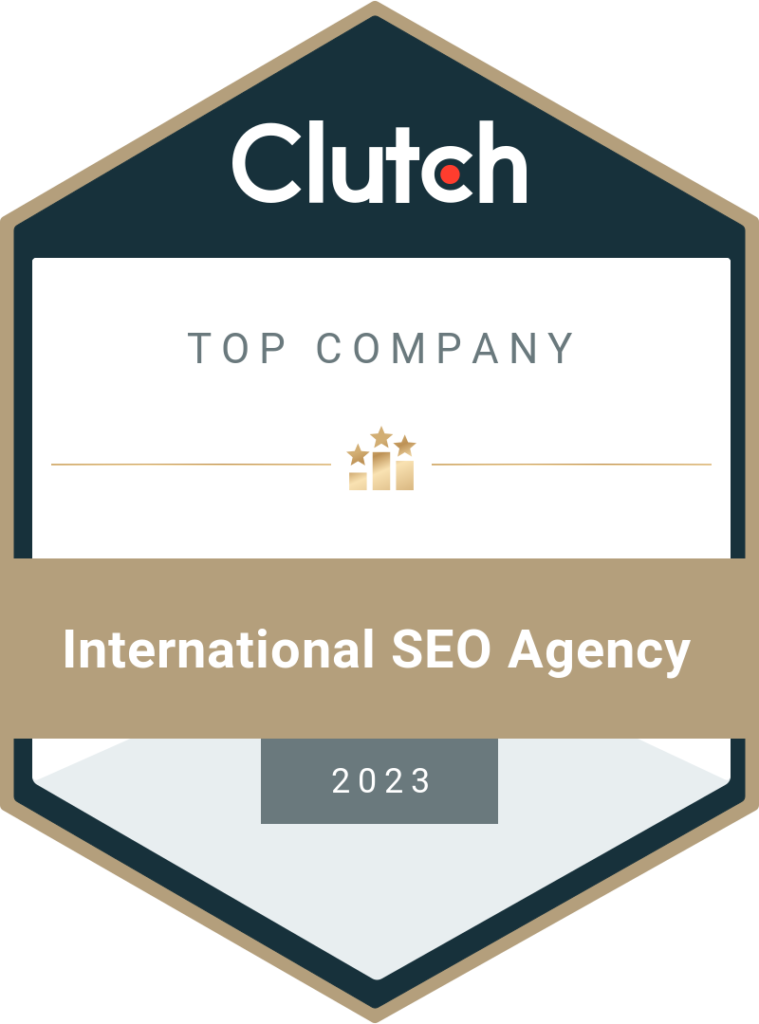Facebook marketing for beauty brands involves utilizing the platform’s diverse range of tools and strategies to effectively promote and position beauty products in front of a highly targeted audience. From organic content creation to paid advertising campaigns, beauty brands can leverage Facebook’s features to drive brand awareness, engage with customers, and ultimately boost their business.
By harnessing the power of visually appealing content, informative product demonstrations, influencer collaborations, and targeted audience segmentation, Facebook marketing enables beauty brands to cut through the digital noise and establish a strong online presence. Whether it’s skincare, makeup, haircare, or fragrance, beauty brands can leverage Facebook to showcase their unique products and connect with a community of beauty enthusiasts.
Through this guide, we will explore the various aspects of Facebook marketing for beauty brands, including organic and paid strategies, key performance indicators (KPIs) to measure success, content creation techniques, best practices, and frequently asked questions. By understanding and implementing these strategies, beauty brands can unlock the full potential of Facebook marketing and thrive in the competitive beauty industry. Let’s dive in and discover how to effectively leverage Facebook to elevate your beauty brand’s online presence and drive growth.
Table of Contents
Why Facebook Marketing is Important for beauty brands?

Facebook marketing provides beauty brands with a powerful platform to reach a vast and diverse audience, target specific customer segments, showcase products visually, build brand awareness and loyalty, collaborate with influencers, gather analytics, and engage with customers. Leveraging these benefits can help beauty brands drive sales, increase brand visibility, and establish a strong online presence.
Must Read: Advanced Facebook Marketing Tips
Facebook marketing is important for beauty brands due to several key reasons
- Large and Diverse Audience: Facebook is the largest social media platform, with billions of active users worldwide. This provides beauty brands with a massive potential audience to reach and engage with. Facebook’s user base is also highly diverse, encompassing people of different ages, genders, locations, and interests, making it an ideal platform to target various customer segments.
- Targeted Advertising: Facebook’s advertising tools allow beauty brands to precisely target their desired audience. You can specify demographics, interests, behaviors, and even target people who have engaged with your brand before. This level of targeting ensures that your ads are shown to relevant users who are more likely to be interested in your beauty products.
- Visual Appeal: The beauty industry thrives on visuals, and Facebook offers a visually engaging platform to showcase your products. You can create visually appealing posts, share high-quality images and videos, and even go live to demonstrate product usage or conduct tutorials. This visual appeal can help captivate users’ attention and generate interest in your beauty brand. Must check Engaging Facebook Post Ideas.
- Building Brand Awareness and Loyalty: Facebook provides a platform for beauty brands to create and strengthen their brand identity. You can share your brand story, values, and unique selling propositions through engaging content and consistent messaging. Regularly interacting with your audience, responding to comments, and addressing queries can build trust and establish a loyal customer base.
- Influencer Collaboration: Facebook allows beauty brands to collaborate with influencers and leverage their reach and influence. Influencers can create sponsored content, reviews, tutorials, or endorsements to promote your products to their followers. Partnering with relevant influencers in the beauty industry can significantly expand your brand’s visibility and credibility.
- Analytics and Insights: Facebook’s advertising platform provides detailed analytics and insights into your campaigns’ performance. You can track metrics such as reach, engagement, click-through rates, conversions, and more. These insights enable you to assess the effectiveness of your marketing efforts, make data-driven decisions, and optimize your campaigns for better results.
- Community Building and Customer Engagement: Facebook offers opportunities for beauty brands to foster a sense of community and engage with their customers. You can create groups or pages where users can share their experiences, ask questions, and connect with like-minded individuals. This engagement can help build a loyal customer base, generate word-of-mouth referrals, and gather valuable feedback.
Ways to promote beauty brands on Facebook?
There are several effective ways to promote beauty brands on Facebook.
Here are some strategies you can implement:
- Engaging Content Creation: Create compelling and visually appealing content that showcases your beauty products. This can include high-quality images, videos, tutorials, before-and-after transformations, and user-generated content. Focus on providing value to your audience by sharing beauty tips, trends, and informative content related to your products.
- Paid Advertising: Utilize Facebook’s targeted advertising features to reach your desired audience. Set up Facebook Ads campaigns to promote specific products, offers, or promotions. Take advantage of the detailed targeting options available to narrow down your audience based on demographics, interests, behaviors, and previous interactions with your brand.
- Influencer Collaborations: Partner with influential beauty bloggers, vloggers, or Instagrammers who have a strong following and align with your brand values. Collaborate with them to create sponsored content, reviews, tutorials, or giveaways. This helps you tap into their audience and gain exposure to a wider group of potential customers.
- Contests and Giveaways: Run contests or giveaways on your Facebook page to generate excitement and engagement. Encourage participants to like, comment, share, or tag friends to enter. This not only increases your reach but also helps in building brand awareness and loyalty. Ensure that the prizes are enticing and relevant to your target audience.
- Live Videos and Q&A Sessions: Utilize Facebook Live to showcase your beauty products in action, conduct tutorials, or answer frequently asked questions. Live videos offer an authentic and interactive experience for your audience, allowing them to engage with you in real-time. Promote the upcoming live sessions in advance to generate anticipation and ensure maximum participation.
- Customer Testimonials and Reviews: Share positive customer testimonials and reviews on your Facebook page. User-generated content is highly influential and can help build trust and credibility for your brand. Encourage customers to share their experiences with your products and feature their testimonials on your page.
- Facebook Groups: Create or join relevant beauty-related Facebook groups to connect with potential customers and industry enthusiasts. Engage in conversations, offer valuable advice, and share relevant content. Avoid being overly promotional but focus on establishing yourself as an authoritative and helpful resource within the community.
- Retargeting: Implement Facebook’s retargeting strategies to reach users who have shown interest in your brand or products. Set up retargeting campaigns to display ads to people who have visited your website, engaged with your Facebook page, or added products to their cart but haven’t completed a purchase. This can help in re-engaging potential customers and increasing conversion rates.
Remember to monitor the performance of your Facebook marketing efforts regularly. Analyze the data and insights provided by Facebook’s analytics tools to refine your strategies, optimize campaigns, and ensure you are achieving your promotional goals. Know how to promote Facebook Page.
Organic Vs Paid Facebook Advertising for Beauty Products Brand

When it comes to promoting a beauty products brand on Facebook, both organic Facebook management and paid Facebook marketing strategies have their advantages and can work together to maximize your reach and impact. Let’s explore the benefits of each approach:
Organic Facebook Marketing
- Cost-effective: Organic marketing involves posting content, engaging with your audience, and building a community on your Facebook page without paying for ads. It can be a cost-effective way to promote your beauty brand, especially if you have a limited budget.
- Authenticity and Trust: Organic Facebook marketing allows you to establish an authentic connection with your audience. By sharing valuable content, responding to comments and messages, and building relationships, you can foster trust and credibility for your brand. This can be particularly important in the beauty industry, where customers value authenticity and transparency.
- Community Engagement: Organic Facebook marketing enables you to create a community around your beauty brand. You can encourage discussions, ask questions, and actively engage with your audience. This interaction can lead to brand loyalty, word-of-mouth recommendations, and valuable feedback.
- SEO Benefits: Facebook pages are indexed by search engines, which means your organic posts can appear in search results. By optimizing your page and content with relevant keywords, you can improve your visibility and attract organic traffic to your page.
Paid Facebook Marketing
- Targeted Reach: Paid Facebook marketing allows you to leverage Facebook’s powerful targeting capabilities to reach specific demographics, interests, and behaviors. This precision targeting ensures that your beauty brand’s ads are shown to people who are more likely to be interested in your products. It can help you reach new potential customers and expand your brand’s visibility.
- Immediate Results: With paid Facebook advertising, you can achieve immediate visibility and results. Unlike organic marketing, which relies on gradual growth and engagement, paid ads can put your beauty brand in front of a larger audience quickly. This can be particularly useful when launching new products or running limited-time promotions.
- Ad Format Variety: Paid marketing on Facebook offers a range of ad formats, such as carousel ads, video ads, slideshow ads, and more. You can choose the format that best showcases your beauty products and aligns with your Facebook marketing objectives. These visually engaging formats can captivate users’ attention and drive conversions.
- Measurable ROI: Paid Facebook advertising provides detailed analytics and insights into your campaign’s performance. You can track metrics like reach, engagement, click-through rates, conversions, and return on investment (ROI). These metrics help you assess the effectiveness of your ad campaigns, make data-driven decisions, and optimize your strategies for better results.
In summary, both organic and paid Facebook marketing have their merits. Organic marketing can be cost-effective, build authenticity and trust, foster community engagement, and provide SEO benefits. Paid marketing, on the other hand, offers targeted reach, immediate results, diverse ad formats, and measurable ROI. To achieve the best results, it’s often beneficial to combine both approaches in your overall marketing strategy, leveraging organic efforts to build a strong foundation and complementing it with paid ads to amplify your reach and drive specific objectives.
KPIs for Facebook Marketing for Beauty Brands

Key Performance Indicators (KPIs) help measure the effectiveness and success of your Facebook marketing efforts for beauty brands.
Here are some KPIs that can be valuable in evaluating the performance of your Facebook marketing campaigns:
- Reach: This metric measures the total number of unique users who have seen your Facebook content. It provides an indication of the size of your audience and the potential exposure of your brand.
- Engagement: Engagement metrics, such as likes, comments, shares, and clicks, demonstrate how users are interacting with your content. Higher engagement signifies that your content is resonating with your audience and generating interest.
- Conversion Rate: Conversion rate tracks the percentage of users who complete a desired action, such as making a purchase, signing up for a newsletter, or downloading a guide. It reflects the effectiveness of your Facebook marketing in driving actual conversions.
- Click-Through Rate (CTR): CTR measures the percentage of users who click on your ads or links compared to the total number of impressions. It indicates the level of interest and relevance of your ads to your target audience.
- Return on Ad Spend (ROAS): ROAS calculates the revenue generated compared to the amount spent on Facebook ads. It helps determine the profitability of your advertising campaigns and assesses the effectiveness of your Facebook marketing budget allocation.
- Cost per Acquisition (CPA): CPA measures the average cost incurred to acquire a new customer or lead through Facebook marketing. It helps evaluate the efficiency and cost-effectiveness of your marketing campaigns.
- Brand Awareness: Brand awareness metrics, such as reach, impressions, and social mentions, assess the extent to which your target audience is aware of your beauty brand. It indicates the effectiveness of your marketing efforts in increasing brand visibility.
- Customer Lifetime Value (CLTV): CLTV measures the net profit generated from a customer over their entire relationship with your brand. By understanding the long-term value of your customers, you can assess the effectiveness of your Facebook marketing in acquiring and retaining valuable customers.
- Return on Investment (ROI): ROI evaluates the overall profitability of your Facebook marketing activities. It compares the financial gains (revenue) to the financial investment (costs) and provides a comprehensive measure of the effectiveness of your marketing efforts.
- Social Sentiment: Social sentiment analysis involves monitoring and analyzing the sentiment and feedback expressed by your audience about your beauty brand on Facebook. Positive sentiment indicates a favorable perception of your brand, while negative sentiment may require attention and mitigation.
Remember, the specific KPIs that are most relevant to your beauty brand may vary based on your business goals, target audience, and marketing strategies. It’s essential to define your objectives and align your KPIs accordingly to measure the success of your Facebook marketing campaigns accurately.
Know how much does digital marketing cost.
How to run Facebook ads for beauty brands

To run effective Facebook ads for beauty brands, follow these steps:
- Define Your Objectives: Determine the specific goals you want to achieve with your Facebook ads. It could be increasing brand awareness, driving website traffic, boosting sales, generating leads, or promoting a new product. Clear objectives will guide your ad strategy.
- Identify Your Target Audience: Understand your target audience’s demographics, interests, behaviors, and preferences. Facebook provides robust targeting options to reach the right people. Define your audience based on factors such as age, gender, location, interests (beauty, skincare, cosmetics), and purchasing behaviors.
- Choose the Right Ad Format: Facebook offers various ad formats to showcase your beauty products effectively. Select the format that aligns with your goals and engages your target audience. Options include image ads, video ads, carousel ads, slideshow ads, collection ads, and more.
- Craft Compelling Ad Creative: Create visually appealing and engaging ad content that showcases your beauty products effectively. Use high-quality images or videos that highlight the benefits, features, and usage of your products. Include compelling copy that grabs attention and encourages action.
- Create Landing Pages: Ensure your ad directs users to dedicated landing pages on your website that align with the ad’s content. Landing pages should be optimized for conversion and provide a seamless user experience. Highlight the promoted product, include persuasive copy, and incorporate clear calls-to-action (CTAs).
- Set a Budget and Bidding Strategy: Determine your ad budget based on your objectives, audience size, and campaign duration. Choose a bidding strategy, such as cost per click (CPC) or cost per thousand impressions (CPM), that aligns with your goals and budget.
- Set Up Ad Campaigns: Use Facebook business manager Facebook Ads Manager to create your Facebook ad campaigns. Define the campaign objective, target audience, budget, schedule, and ad placements. Customize your ad sets with specific targeting options, ad creative, and bidding strategies.
- Monitor and Optimize: Regularly monitor the performance of your ads to identify areas for improvement. Analyze metrics such as reach, engagement, click-through rates, conversion rates, and ROI. Optimize your campaigns by adjusting targeting, ad creative, bidding, or ad placements based on the data insights.
- Test and Iterate: Experiment with different ad variations, including different visuals, ad copy, calls-to-action, or target audience segments. A/B test your ads to identify the most effective elements and refine your strategy accordingly.
- Track and Measure Results: Use Facebook’s ad analytics tools to track the performance of your campaigns. Measure key metrics, such as conversions, engagement, and ROI, against your defined objectives. This data will help you assess the success of your Facebook ads and make data-driven decisions for future campaigns.
Remember to comply with Facebook’s advertising policies and guidelines, especially those specific to the beauty industry. Stay updated on any changes or updates to Facebook’s advertising platform to ensure you are utilizing the latest features and best practices for running ads.
Facebook Marketing Tips for Beauty Brands With And Without a Website
Let’s take the first scenario when you have a website or ecommerce store for beauty products.
- Set up a Facebook Business Manager account: Create a Facebook Business Manager account to manage your Facebook ad campaigns effectively. This will allow you to access the Ads Manager, create ad accounts, and organize your advertising assets.
- Install Facebook Pixel: Install the Facebook Pixel on your e-commerce store. The Pixel tracks user behavior on your website, enabling you to measure the effectiveness of your ads, optimize for conversions, and create remarketing campaigns.
- Define Your Advertising Objectives: Determine your advertising goals. Are you looking to drive website traffic, increase sales, generate leads, or promote a specific product? Clearly define your objectives to align your ad strategy accordingly.
- Create an Ad Campaign: In Facebook Ads Manager, click on “Create Campaign” and select your campaign objective. Choose an objective that aligns with your defined goals, such as “Traffic,” “Conversions,” or “Catalog Sales.” Know how to run ecommerce Facebook ads. Also read about Facebook catalog sales ads.
- Set Up Ad Set: Within your campaign, create an ad set. Define your target audience based on demographics, interests, and behaviors. Set your budget, bidding strategy, and ad schedule. Consider targeting options specific to the beauty industry, such as interests in skincare, makeup, or beauty influencers.
- Choose Ad Format and Create Ad Creative: Select the ad format that best suits your objectives and resonates with your audience. Options include image ads, video ads, carousel ads, and collection ads. Create visually appealing ad creative that showcases your beauty products effectively. Include compelling headlines, engaging copy, and clear calls-to-action.
- Customize Placement and Budget Optimization: Choose the ad placements where your ads will be shown. Consider placements on Facebook feeds, Instagram, Messenger, and the Audience Network. Optimize your budget by selecting either a daily budget or a lifetime budget.
- Set Up Conversion Tracking: If your objective is to drive conversions, set up conversion tracking. Define the specific actions you want to track, such as completed purchases or newsletter sign-ups. Use the Facebook Pixel to track these conversions and optimize your campaigns for better results.
- Review and Launch: Review your ad campaign settings, targeting, ad creative, and budget allocation. Double-check that everything is correctly set up. Once you’re satisfied, launch your campaign.
- Monitor, Measure, and Optimize: Regularly monitor the performance of your ad campaigns. Analyze key metrics, such as reach, impressions, click-through rates, conversions, and return on ad spend (ROAS). Use this data to optimize your campaigns by adjusting targeting, ad creative, budgets, or bidding strategies for better results.
- Test and Iterate: Experiment with different ad variations, such as different visuals, ad copy, or target audience segments. Conduct A/B testing to identify the most effective elements and refine your ads accordingly.
- Scale and Expand: Once you find successful ad campaigns, consider scaling them by increasing your budget or targeting additional relevant audience segments. Also, explore other Facebook advertising features, such as dynamic product ads, lookalike audience targeting, or retargeting strategies to expand your reach and maximize results.
Remember to comply with Facebook’s advertising policies, use high-quality visuals, and stay up to date with any changes or updates to Facebook’s advertising platform. Regularly analyze your ad performance, make data-driven decisions, and optimize your campaigns to drive better results for your beauty product e-commerce store. Know how to run ecommerce Facebook ads.
Let’s understand the ways to advertise your beauty product brand when you don’t have a website.
Facebook Marketing Tips when you don’t Have a website for your beauty products brand
If you don’t have a website for your beauty product brand, you can still run Facebook ads to promote your products.
Here’s a step-by-step process:
- Set up a Facebook Business Manager account: Create a Business Manager account to manage your Facebook ad campaigns effectively. This will allow you to access the Ads Manager, create ad accounts, and organize your advertising assets.
- Define Your Advertising Objectives: Determine your advertising goals. Are you looking to increase brand awareness, generate leads, drive sales, or promote a specific product? Clearly define your objectives to align your ad strategy accordingly.
- Set Up a Facebook Page: Create a Facebook Page for your beauty product brand. This will serve as your online presence on Facebook and a platform to showcase your products, engage with your audience, and run ads.
- Create Compelling Visuals: Develop visually appealing ad creative that showcases your beauty products effectively. Use high-quality images or videos that highlight the benefits, features, and usage of your products. Invest in professional product photography or create visually engaging graphics.
- Craft Engaging Ad Copy: Write compelling ad copy that grabs attention and encourages action. Highlight the unique selling points of your beauty products, emphasize their benefits, and include clear calls-to-action (CTAs) to drive engagement.
- Choose the Right Ad Format: Select the ad format that best suits your objectives and resonates with your audience. Options include image ads, video ads, carousel ads, and collection ads. Choose the format that allows you to effectively showcase your products and engage your target audience.
- Define Your Target Audience: Understand your target audience’s demographics, interests, behaviors, and preferences. Define your audience based on factors such as age, gender, location, interests (beauty, skincare, cosmetics), and purchasing behaviors. Facebook provides robust targeting options to reach the right people.
- Set Up Ad Campaigns: In Facebook Ads Manager, click on “Create Campaign” and select your campaign objective. Choose an objective that aligns with your defined goals, such as “Brand Awareness,” “Reach,” or “Engagement.” Set up your ad targeting, budget, and schedule.
- Monitor and Optimize: Regularly monitor the performance of your ads to identify areas for improvement. Analyze metrics such as reach, engagement, click-through rates, and ad relevance scores. Optimize your campaigns by adjusting targeting, ad creative, or budget allocation based on the data insights.
- Drive Traffic to Social Media Platforms: Instead of a website, direct users to your social media platforms where they can learn more about your brand and products. Include links to your Facebook Page, Instagram profile, or other social media accounts in your ad copy to drive traffic and engagement.
- Utilize Messenger Ads: Consider using Messenger ads to engage with your audience directly. Messenger ads allow you to initiate conversations and answer inquiries about your products, providing a personalized experience and building customer relationships.
- Measure Results and Adjust: Use Facebook’s ad analytics tools to track the performance of your campaigns. Measure key metrics such as engagement, reach, click-through rates, and conversions (if applicable). Adjust your ad strategy based on the insights gained to optimize your results.
While not having a website limits some capabilities, leveraging social media platforms, engaging with your audience through ads, and driving traffic to your social media profiles can still effectively promote your beauty product brand.
Understanding the target demographic during Facebook Ads for Beauty brand

Understanding your target demographic is crucial for running effective Facebook ads for a beauty brand.
Here are some steps to help you better understand and define your target audience:
- Analyze Existing Customer Data: Look at your existing customer base and analyze their demographics, interests, behaviors, and purchasing patterns. Identify commonalities and trends that can help you create a profile of your ideal customer.
- Conduct Market Research: Conduct market research to gain insights into your target audience. This can involve surveys, interviews, focus groups, or analyzing industry reports. Understand their preferences, pain points, buying habits, and what influences their purchasing decisions in the beauty industry.
- Define Demographic Characteristics: Identify the demographic characteristics of your target audience, such as age, gender, location, and income level. Consider factors like education level, occupation, and marital status if relevant to your products.
- Explore Psychographic Factors: Dive deeper into your target audience’s psychographic factors, which include their attitudes, values, lifestyles, interests, and behaviors. Understand their motivations, aspirations, and how they perceive beauty and self-care.
- Leverage Facebook Audience Insights: Use Facebook’s Audience Insights tool to gain valuable data about your target audience. Explore their demographics, interests, behaviors, and purchasing patterns. This tool allows you to refine your targeting based on their Facebook activity.
- Utilize Custom Audiences: If you already have a customer database, you can create custom audiences on Facebook using their contact information. This allows you to target ads specifically to your existing customers or lookalike audiences who share similar characteristics.
- Segment Your Audience: Divide your target audience into segments based on their characteristics and preferences. For example, you could create segments based on age groups, skincare concerns, makeup preferences, or lifestyle interests. This allows you to tailor your ads and messaging to specific segments.
- Test and Refine: Launch small-scale ad campaigns to different segments of your target audience. Monitor the performance of each segment and refine your targeting based on the results. This iterative approach helps you optimize your ads and messaging for maximum effectiveness.
- Engage with Your Audience: Actively engage with your target audience on social media, including Facebook. Monitor comments, messages, and discussions related to your brand and products. This interaction helps you understand their needs, concerns, and preferences, allowing you to further refine your targeting and ad strategies.
- Continuously Monitor and Adapt: Consumer behaviors and preferences change over time, so it’s important to continuously monitor your target audience and adapt your strategies accordingly. Stay updated on industry trends, follow relevant influencers, and keep an eye on competitors to ensure your ads remain relevant and effective.
Remember, understanding your target demographic is an ongoing process. Regularly review and refine your audience targeting based on data insights, feedback, and changes in the beauty industry to ensure your Facebook ads effectively reach and resonate with your desired audience
How to create engaging content for beauty products brand Facebook Marketing Campaign
Creating engaging content for beauty product brands involves capturing the attention of your target audience, providing value, and fostering a connection with them.
Here are some strategies to create engaging content:
- Understand Your Audience: Gain a deep understanding of your target audience’s preferences, interests, and needs. Research their beauty routines, challenges, and aspirations. This knowledge will help you create content that resonates with them.
- Showcase Visuals: Beauty is a visually appealing industry, so leverage high-quality images and videos to showcase your products. Highlight their features, application techniques, and results. Use professional photography, user-generated content, or create tutorials and demonstrations to engage your audience visually.
- Educate and Inform: Provide valuable information and education to your audience. Share skincare tips, makeup tutorials, beauty hacks, or industry insights. Offer solutions to common beauty problems or answer frequently asked questions. Position your brand as a trusted source of knowledge and expertise.
- Tell Stories: Use storytelling to connect with your audience emotionally. Share customer success stories, testimonials, or behind-the-scenes glimpses into your brand and products. Personalize your content by showcasing real people and their experiences with your beauty products.
- User-Generated Content: Encourage your audience to create and share content featuring your products. Run contests or campaigns where users can submit their makeup looks, skincare routines, or product reviews. Repost and showcase user-generated content, giving credit to the creators. This fosters a sense of community and encourages engagement.
- Collaborate with Influencers: Partner with relevant beauty influencers or micro-influencers to create content. Influencers can showcase your products, provide honest reviews, or collaborate on tutorials and challenges. Their endorsement and reach can significantly boost engagement and brand awareness.
- Provide Tips and How-To Guides: Share practical tips, step-by-step guides, and tutorials to help your audience achieve desired beauty looks or address specific concerns. This positions your brand as a helpful resource and encourages your audience to engage with and share your content.
- Create Interactive Content: Incorporate interactive elements into your content to increase engagement. Polls, quizzes, surveys, or interactive stories allow your audience to actively participate and provide feedback. This creates a sense of involvement and encourages social sharing.
- Use Influential Captions: Craft captivating and compelling captions that accompany your visuals. Use storytelling techniques, pose questions, or create curiosity to encourage your audience to engage with your content. Experiment with different tone and styles to find what resonates best with your audience.
- Leverage Seasonal and Trending Topics: Stay updated on seasonal events, holidays, or beauty trends. Create content that aligns with these themes, offering special promotions, makeup looks, or skincare routines. Tap into trending topics to increase the relevance and shareability of your content.
- Engage in Conversations: Actively respond to comments, messages, and inquiries on your social media platforms. Encourage dialogue, ask for opinions, and make your audience feel heard and valued. Engaging with your audience builds a loyal community around your brand.
- Analyze and Iterate: Regularly analyze the performance of your content. Monitor engagement metrics such as likes, comments, shares, and click-through rates. Use these insights to understand what types of content resonate most with your audience and refine your content strategy accordingly.
Remember to maintain a consistent brand voice, align your content with your brand values, and keep your messaging authentic. Experiment with different content formats, monitor audience feedback, and adapt your strategy to ensure ongoing engagement with your target audience.
Best practices for beauty products Facebook marketing
To maximize the effectiveness of your Facebook marketing for beauty products, here are some best practices to follow:
- Clearly Define Your Target Audience: Understand your target audience’s demographics, interests, and behaviors. This will help you create targeted and relevant content that resonates with them.
- Engaging Visuals: Use high-quality images and videos that showcase your beauty products in an appealing way. Capture attention with visually stunning visuals that highlight the benefits and results of your products.
- Compelling Ad Copy: Craft compelling and concise ad copy that grabs attention and entices viewers to take action. Highlight the unique selling points of your products, address pain points, and include clear calls-to-action.
- A/B Testing: Conduct A/B tests with different variations of your ads, including visuals, copy, and audience targeting. Test different elements to identify what works best and optimize your campaigns based on the results.
- Mobile Optimization: Ensure your ads are optimized for mobile viewing, as many Facebook users access the platform through mobile devices. Use mobile-friendly formats, concise copy, and visually appealing content that translates well on smaller screens.
- Utilize Facebook Pixel: Install and utilize the Facebook Pixel on your website to track conversions, optimize for specific actions, and retarget visitors. The Pixel provides valuable data to optimize your campaigns and measure their success.
- Retargeting Campaigns: Implement retargeting campaigns to reach users who have previously engaged with your brand or shown interest in your products. This can be done by creating custom audiences based on website visits, engagement with your Facebook Page, or other actions.
- Video Content: Leverage video content as it tends to capture attention and generate higher engagement on Facebook. Create product demos, tutorials, or behind-the-scenes videos to showcase your brand and products.
- Influencer Partnerships: Collaborate with influencers or beauty bloggers who have a relevant and engaged following. Partnering with influencers can help increase brand awareness, credibility, and reach a wider audience.
- Social Proof: Highlight customer testimonials, reviews, and user-generated content to provide social proof and build trust with your audience. Encourage customers to share their experiences and feedback on social media.
- Seasonal and Trend-Related Campaigns: Align your campaigns with seasonal events, holidays, or beauty trends. This helps to make your content timely, relevant, and more likely to resonate with your target audience.
- Consistent Branding: Maintain a consistent brand voice, style, and messaging across your Facebook marketing efforts. This helps to build brand recognition and strengthen your brand identity.
- Regular Monitoring and Optimization: Continuously monitor the performance of your ads and campaigns. Analyze key metrics such as click-through rates, engagement, conversions, and return on ad spend (ROAS). Make data-driven decisions and optimize your campaigns to achieve better results.
By following these best practices, you can enhance the effectiveness of your Facebook marketing for beauty products and drive engagement, conversions, and brand awareness among your target audience.
How to measure the success of a beauty product brand Facebook marketing campaign

Measuring the success of your beauty product brand’s Facebook marketing campaign is essential to understand its impact and optimize your strategies.
Here are some key metrics and methods to measure the success of your Facebook marketing campaign:
- Reach and Impressions: Monitor the reach and impressions of your ads to gauge the number of people who have seen your content. Higher reach and impressions indicate broader brand exposure.
- Engagement Metrics: Look at engagement metrics such as likes, comments, shares, and clicks to measure the level of audience interaction with your ads. Higher engagement indicates that your content is resonating with your audience.
- Click-Through Rate (CTR): Calculate the CTR to assess the percentage of people who clicked on your ads after viewing them. A higher CTR indicates a strong call-to-action and audience interest in your products.
- Conversion Tracking: Use Facebook Pixel or other conversion tracking tools to measure specific actions taken by users, such as product purchases, newsletter sign-ups, or form submissions. This allows you to determine the direct impact of your Facebook ads on conversions.
- Return on Ad Spend (ROAS): Analyze the ROAS to determine the revenue generated relative to the amount spent on your Facebook ads. This metric helps you understand the effectiveness and profitability of your campaign.
- Cost per Result: Calculate the cost per result, such as cost per click (CPC), cost per engagement (CPE), or cost per conversion (CPA). This metric provides insights into the efficiency of your campaign and helps you compare the performance of different ad sets.
- Audience Insights: Utilize Facebook’s Audience Insights tool to gain valuable information about your target audience. Analyze demographics, interests, and behaviors of the users engaging with your ads. This data helps you refine your targeting and better understand your audience.
- Split Testing: Conduct A/B tests by running different variations of your ads to determine which elements perform better. Test different visuals, ad copy, audience targeting, or call-to-action buttons to optimize your campaign performance.
- Brand Awareness and Sentiment: Monitor brand sentiment by assessing comments, reviews, and social media mentions related to your campaign. Positive sentiment indicates a successful brand perception, while negative sentiment may require adjustments to your strategy.
- Return on Investment (ROI): Assess the overall return on investment by considering the revenue generated from your campaign compared to the costs incurred. Calculate the ROI to determine the financial impact of your Facebook marketing efforts.
Regularly analyze these metrics throughout your campaign duration and compare them to your initial goals and benchmarks. Use the insights gained to refine your strategies, optimize your campaigns, and improve future Facebook marketing efforts for your beauty product brand.
Want to Advertise Your Beauty Products Brand on Facebook?
RankON Technologies is a leading social media marketing company that offers effective Facebook advertising services at the very best prices. Must check our Facebook advertising plans to get started. We also offer social media management services and Google ads marketing services to promote ecommerce stores. Check our complete PPC Services NOW.
Get in Touch!Check our Facebook PackagesBeauty Brand Facebook Marketing FAQs
The frequency of your posts will depend on your audience and the engagement levels you observe. Generally, it is recommended to post consistently, aiming for at least a few times per week to maintain an active presence. Monitor engagement metrics to determine the optimal posting frequency for your specific audience.
Share a mix of content that aligns with your brand and appeals to your target audience. This can include product highlights, tutorials, before-and-after transformations, user-generated content, industry news, behind-the-scenes glimpses, beauty tips, and trends. Experiment with different formats, such as images, videos, carousels, and live streams, to keep your content diverse and engaging.
Yes, Facebook ads can be effective even with a small budget. You can set daily or lifetime budget limits and optimize your targeting to reach your specific audience. Start with a smaller budget and monitor the performance of your ads. As you gain insights and see positive results, you can gradually increase your ad spend.
Utilize Facebook’s targeting options to narrow down your audience based on demographics (age, gender, location), interests (beauty, skincare, makeup), behaviors (online shopping, beauty product purchases), and more. Additionally, consider creating custom audiences based on your existing customer data or lookalike audiences to reach users who share similarities with your current customers.
Absolutely. Engaging with your customers is crucial for building relationships and trust. Respond to comments, messages, and inquiries promptly and professionally. Encourage conversations, address concerns, and express gratitude for positive feedback. Actively engaging with your audience fosters a sense of community and can help strengthen your brand’s reputation.
User-generated content (UGC) is a powerful tool for social proof and engagement. Encourage your customers to share their experiences, reviews, and photos featuring your products. Repost and share UGC on your Facebook page, giving credit to the creators. UGC not only increases engagement but also builds authenticity and trust around your brand.
Having a Facebook group can be beneficial for fostering a community of loyal customers and brand advocates. It allows for more focused discussions, exclusive content, and a direct line of communication with your audience. However, creating and managing a Facebook group requires time and effort. Consider whether it aligns with your overall marketing goals and resources before deciding to create one.
To measure ROI, track the revenue generated from your Facebook campaigns and compare it to the costs incurred, including ad spend and associated expenses. Use conversion tracking, such as Facebook Pixel, to attribute sales and actions to your Facebook ads. Additionally, consider the lifetime value of customers acquired through Facebook marketing to assess the long-term impact on your brand’s profitability.












